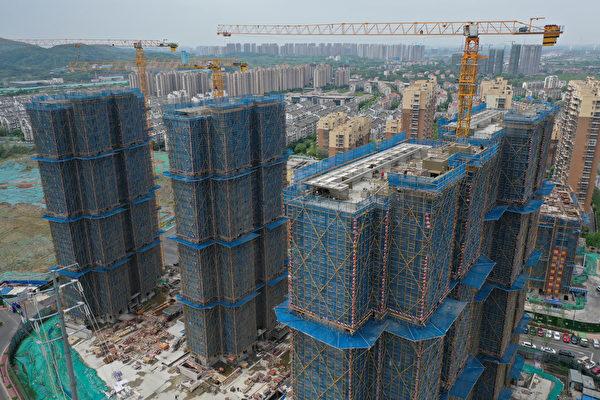“Sales at China’s largest housing developers fell 43 percent in June from a year earlier, according to China Real Estate Information Corp,” Bloomberg reported, creating an alarming funding gap for local governments, where finances are heavily dependent on land sale revenues, and a significant problem for the financial sector and the government. China’s central bank has promised to mobilize a $148 billion bailout to complete unfinished real estate projects as anger rises among property buyers that haven’t received their homes after advancing significant payments.
JP Morgan explained the extent of the problem in a recent report “China’s housing market alarm bell rings again.” According to the report, “Since June 30, mortgage suspension requests due to delayed home delivery have expanded to more than 300 projects in different parts of China.” JP Morgan’s equity research team estimates that these requests represent a total value of 330 billion yuan ($49 billion) (or a mortgage value of 132 billion yuan ($20 billion) assuming a 40 percent loan to value).
Local governments have seen their fiscal revenue decline by 7.9 percent in the first half of 2022, and land sales collapsed by 31.4 percent. “Meanwhile, fiscal expenses by local governments rose 6.4% due to stickiness in fiscal spending and increasing costs associated with the zero-COVID policy,” and JP Morgan estimates that a 5 percentage point deceleration in real estate investment would reduce GDP growth by 0.6 to 0.7 percentage points.
There are relevant implications for many sectors and for families. Real estate developers were the largest issuers of commercial paper in China, and millions of savers invested in bonds and debt instruments of property developers to generate stable and safe returns. Many of those are defaulting. According to ANZ bank, China bond defaults have reached $20 billion in 2022, more than double last year’s total. Out of 19 defaults recorded, 18 came from property developers.
Real estate is also a relevant driver of economic activity in the services and other manufacturing sectors. The collapse of many developers is generating ripple effects throughout the sectors that thrive from construction and the activity that real estate incentivizes.
For investors globally, this is largely a domestic issue, and many expect the government to contain it through a series of bailouts and liquidity injections to the financial sector to prevent a credit crunch. From a financial perspective this may be correct, but there’s no way for the Chinese regime to prevent the macroeconomic implications coming from the burst of a bubble of such enormous magnitude. Chinese GDP growth slowed to only 0.4 percent in the second quarter, and youth unemployment is rising to new highs.
The Chinese regime may be able to contain the financial implications of the real estate crisis, but to do so it will have to abandon the target of 5.5 percent GDP growth for 2022 and probably reduce the 2023 objective to a much smaller figure. For years, the regime has been concerned about the rising level of debt in the Chinese economy and the elevated weight of the housing sector, but it seemed it expected growth and the improvement in the so-called “new economy” to disguise the problem.
Many international analysts expected China to be the first economy to prove that it could navigate a real estate bubble by deflating it through central planification. There was too much hope placed on central planning and too little attention on the extent of the problem.
Now it’s evident that there’s no sector that can dilute the effect of a real estate bubble burst. Even if the financial challenge is addressed through bailouts and liquidity injections, the impact will have to manifest itself in the currency, inflation, unemployment, growth, or all at the same time. Many believe that the easiest solution is to depreciate the yuan, but the central bank knows it isn’t that easy, as inflation would deteriorate the standards of living of an already discontent population, and devaluation would destroy the purchasing power of real wages and the value of savings.
If we can learn anything from this property slump it’s that inflating growth with a central-planned housing bubble never leads to an easy and manageable solution.





